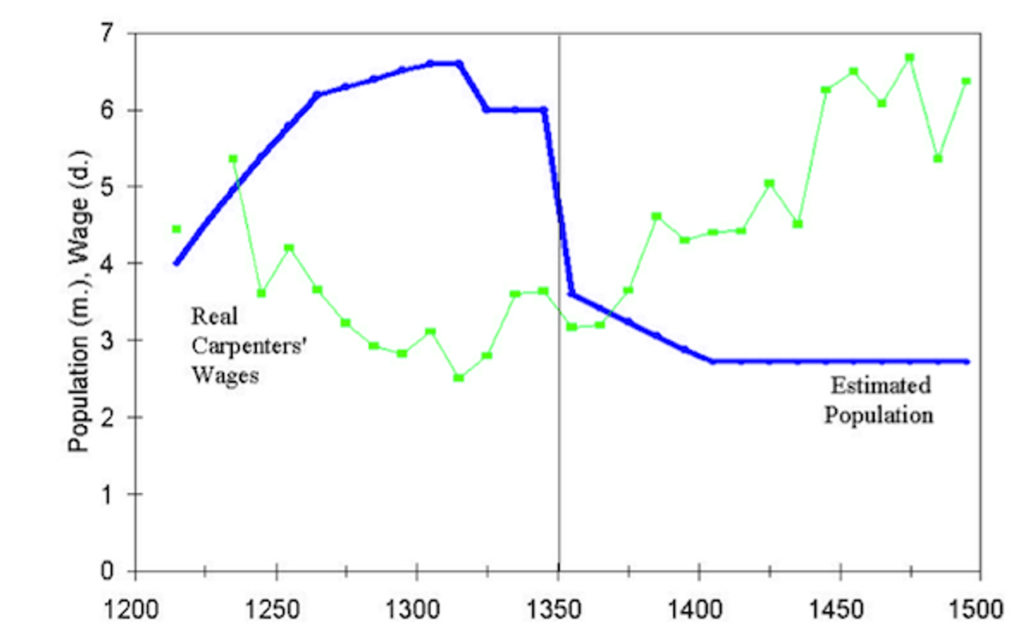The Plague
With Reading Period coming up, I thought I would give you some reading. We start this week with Christopher Moore from the Santa Fe Institute that R0 is just an average, and the same initial conditions can lead to wildly different outcomes (which is why average thinking can be so dangerous). Be able to articulate why two areas starting with the same R0 can lead to such different outcomes. And, importantly, think about the implications of a high variance on public policy measures.
Also for this week, we will think about the archetypal pandemic, the Plague! Yikes. You can read the chapters out of Snowden’s book or watch his lectures to get the basic idea. Make sure you read The Economist piece on dear labour and internalize the logic there — does it map to the basic story of the Jordà, Singh, and Taylor time-series results?
Also, take a look at the piece by Cliff, Smallman-Raynor, and Stevens on the defensive measures Italy too to stave off the plague. Did you know about those? Then take a quick trip across the Adriatic to modern-day Dubrovnik, great pics from the BBC give you the sense that maybe life in quarantine wasn’t so bad!

There is a lot of other stuff here, some you may be more interested in than others. I had no idea plague hit the US shores, and certainly not in the 20th century! And, unfortunately, there is no dearth of scapegoating, then and now, and probably later, too, running the gamut from discouraging to horrifying to even worse than horrifying. I’ve posted a few recent examples from the Washington Post.
Average Thinking Gets You in Trouble (Santa Fe institute)
- Christopher Moore, “R-naught is just an average,” Santa Fe Institute blog, April 27, 2020
The Plague
- Frank Snowden, “Overview of the Three Plague Pandemics: 541 to ca. 1950,” Chapter 3 of Epidemics and Society, Yale University Press, 2019. (good stuff, read/skim to taste)
- Frank Snowden, “Plague as a Disease,” Chapter 4 of Epidemics and Society, Yale University Press, 2019. (skim, look at pictures)
- Frank Snowden, “Responses to Plague,” Chapter 5 of Epidemics and Society, Yale University Press, 2019. (Responses to Plague!)
Alternatives: Snowden “Responses and Measures,” and “Illustrations and Conclusions” from Yale Open Courses.
- Julia Flynn Siler, “Black Death at the Golden Gate Review: San Francisco Plague Years,” Wall Street Journal, May 5, 2019
Oh, Dear
- “Plagued by dear labour,” Economist, October 21, 2013 (Read)
- Andrew D. Cliff, Matthew R. Smallman-Raynor, and Peta M. Stevens. “Controlling the geographical spread of infectious disease: Plague in Italy, 1347-1851.” Acta medico-historica Adriatica 7.2 (2009): 197-236. (Read 197-208 and skim rest)
- Kristin Vuković “Dubrovnik: The medieval city designed around quarantine,” BBC.com, 22 April, 20 (skim to taste)
Scapegoating (I chose the WaPo as a potentially neutral outlet for these types of contemporaneous assessments of racist attitudes and actions; because it is a subscription site, you might have to read it in an Incognito or Private browser).
- Robert Griffin, John Sides and Michael Tesler “Negative views of Asian people have risen in both parties,” Washington Post, April 8, 2020
- Anna Fifeld, “Africans in China allege racism as fear of new virus cases unleashes xenophobia,” Washington Post, April 13, 2020 (skim to taste)
- Joanna Slater and Niha Masih “As the world looks for coronavirus scapegoats, Muslims are blamed in India,” Washington Post, April 23, 2020 (skim to taste)
- Mica Soellner “Asian Americans grow fearful of xenophobic attacks, especially in small communities,” Appleton Post Crescent, April 7, 2020 (skim to taste)
